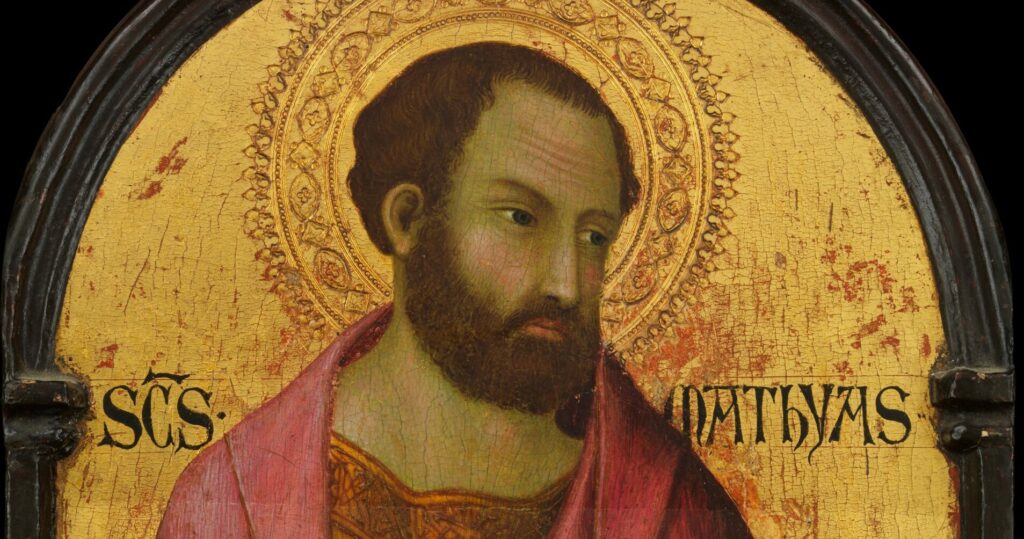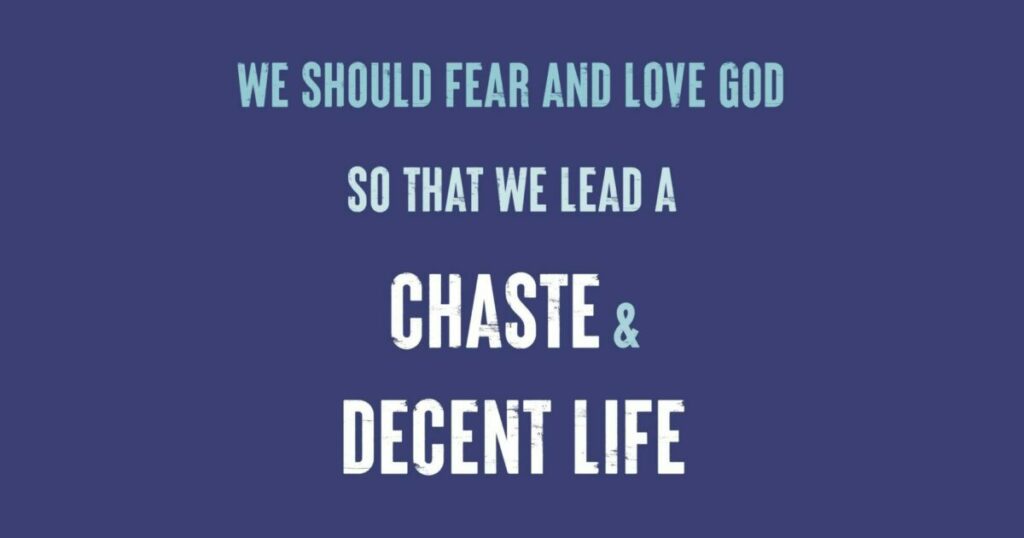This text is taken from a sermon preached by the Rev. Sean Daenzer on Acts 1 on St. Matthias Day, 2/24/21, in the LCMS International Center Chapel. While Matthias’ day is usually celebrated on Feb. 24, in Leap Years the church commemorates Matthias on Feb. 25.[1]
+In the Name of the Father, and of the Son, and of the Holy Spirit+
We know almost nothing about Matthias, and we know more than we care to about Judas. We aren’t quite sure how Matthias died — some traditions say it was at the hands of Ethiopian cannibals, others that he was beheaded in Jerusalem; but we know exactly how Judas died, in grisly detail.
Acts says more about Judas than Matthias, and then Matthias is never again mentioned. Even today’s collect, now “cleaned up” for polite ears in LSB, once said Matthias was put “into the place of the traitor Judas,” and so we beg God to preserve His church from false apostles to abide continually in the teaching of the true Apostles, that is, of Christ Himself.
It’s dangerous to try to scrub the warnings out of Christianity and focus only on positives. Consider the Gospels. They don’t hesitate to say Jesus sent out “the eleven” — eleven and not “twelve,” for Judas is no more. Likewise our Confessions contrast Judas to St. Peter, Saul to King David. The former men are cautionary tales, that contrition and suffering are nothing without faith.
It is possible for Christians to stumble. The righteous cry out for mercy, as the Psalms constantly attest. And when we do stumble, we should not be surprised or dashed to pieces by such negatives. The very purpose of Christ’s death is to win mercy for sinners. Judas was cut to the heart, turned in horror from his sin by God’s Law, but he would not be turned back to Christ. He bore His own punishment. He bore a yoke — not Christ’s, but a noose.
Into that hole Matthias was placed. The lot fell to him and he was numbered among the apostles. It commonly said that pastors bear the yoke of Christ. If so, we need to hear the warning of Judas together with the ordination of Matthias. We should remember our calling together with Jesus’ words, “take up your cross and follow me” (Matt. 16:24). The ministry is a cross. And in our religion, crosses are good for us. They mortify our sinful flesh. They are the refiner’s fire to burn away all dross. Crosses conform us to the image of God’s Son.
But wherever death is at work in us preachers, life is at work in our hearers (2 Cor. 4:12). So some of us kiss the cross on the nape of our stoles as we vest, acknowledging both the danger and the power of this ministry, which is not our own — and that our suffering is for the sake of those to whom we minister, that we not become puffed up or unfaithful.
But let us not make the terrible mistake of Judas’ pastors, those evil priests who would not absolve him as they should have, but shamefully told him to “see to it himself.” That is false preaching for our hearers and for ourselves. How easy it would be to imagine we must see to this ministry ourselves and thereby make our stoles into nooses.
Do not forget what Christ actually said about His yoke: “Come to me, all you who labor and are heavy laden, and I will give you rest”(Matt. 11:28). This is not a warning or burdening, but the faith-creating word of mercy. The cross we preach is more than suffering and death because of the Lord who is hanged on it. He has seen to it Himself for us. That means no sinner, even no traitor, must bear his own yoke; Christ has borne it all and put it to death forever in His cross.
If you still wish to find in the invitation to “bear the yoke” a connection to our Office as pastors, or to the crosses of any other Christian vocation, then you may only do that in the confidence that your sins are forgiven. His cross sanctifies yours, not the other way around. Indeed, you are Christ’s own, which means in Christ your labor is not in vain. To the world, Matthias is as forgotten and unknown as we are likely to be. Rightly so, for we preach not ourselves, but Christ crucified as Lord. Rest easy, for you are known by Him.
+In the Name of the Father, and of the Son, and of the Holy Spirit+
[1] In our modern calendar (the Gregorian calendar), we count the days of February from 1 to 28, and consider the 29th to be the added day. Ancient Christians and the Romans around them, however, used the Julian Calendar, the first calendar to introduce the “leap day.” Instead of adding a day to the end of the month, the Julian Calendar added “a second February 24,” which was inserted the day before February 24. Matthias’ feast day, under the Julian Calendar, was celebrated on the sixth day before the first day of March, and this stayed consistent whether or not a “second February 24” was added in before that day. From our perspective in the Gregorian calendar, Matthias’ feast day seems to shift one day later during a Leap Year.
Image: “St. Matthias,” Workshop of Simone Martini, ca. 1317–19.






RE: “The very purpose of Christ’s death is to win mercy for sinners.”
Amen! And what is the purpose of winning mercy for sinners?
— “For freedom Christ has set us free” (Gal. 5:1 ESV).
— that we “might walk in newness of life … dead to sin and alive to God in Christ Jesus” (Romans 6:5,11 ESV).
— “that my joy may be in you, and that your joy may be full” (John 15:11 ESV).
— “for good works, which God prepared beforehand, that we should walk in them” (Eph. 2:10 ESV).
— that the “Father is glorified [as we] bear much fruit” (John 15:8 ESV).
— “to redeem us from all lawlessness and to purify for himself a people for his own possession who are zealous for good works” (Titus 2:14 ESV).
— “that those who live might no longer live for themselves but for him who for their sake died and was raised” (2 Cor 5:15 ESV).
— “that you may proclaim the excellencies of him who called you out of darkness into his marvelous light” (1 Peter 2:9 ESV).